This is the best Coho Salmon Recipe With Dry Rub! This tender delicate variety of pink fish also known as silvers found in the North Pacific is popular and delicious for a healthy dinner. Baked, smoked, grilled or slow cooked we will share how to cook it in a variety of ways.
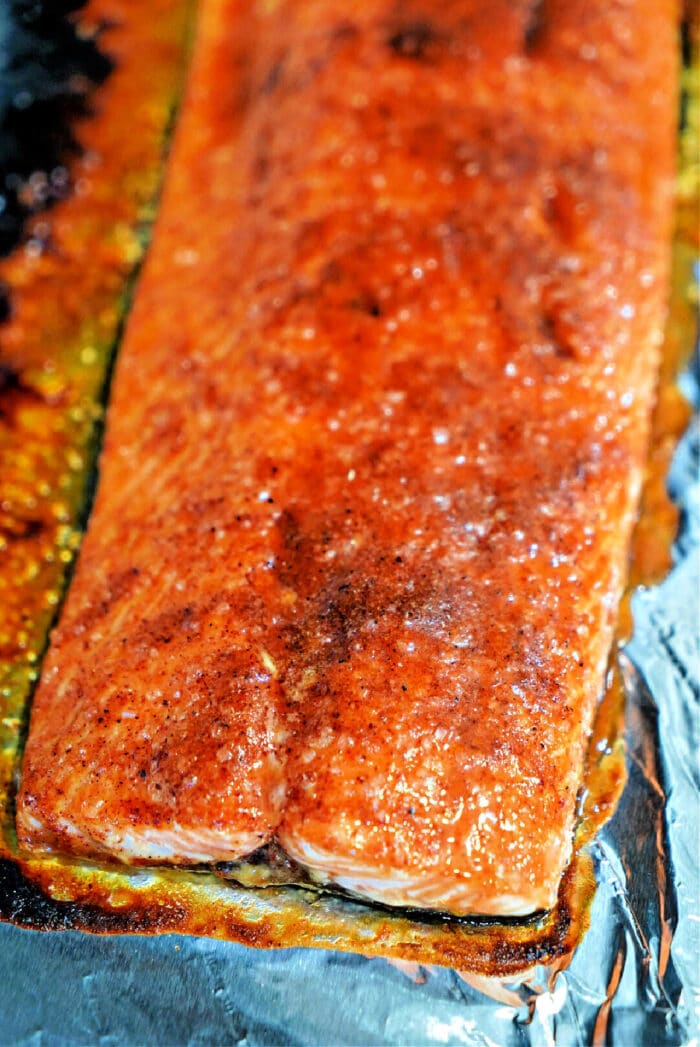
Coho salmon is a species of this popular pink fleshed fish. One of the five Pacific types of salmon species. These are also known as silver salmon or “silvers” for some. You can bake it with just salt and pepper or use our salmon dry rub for tons of flavor!
Silver Salmon Recipe
Known for their distinctive appearance. They have blue green colored backs with silver sides and white bellies. During their spawning phase their bodies can turn bright red or orange. Native to the North Pacific Ocean and can be found in both the eastern and western North Pacific regions.
Highly prized for its mild and delicate flavor with a slightly sweet taste, it has a tender and flaky texture with a lighter color than king salmon would. A popular choice for dishes like Baked Salmon at 350, steaks, sushi, and served raw as sashimi.
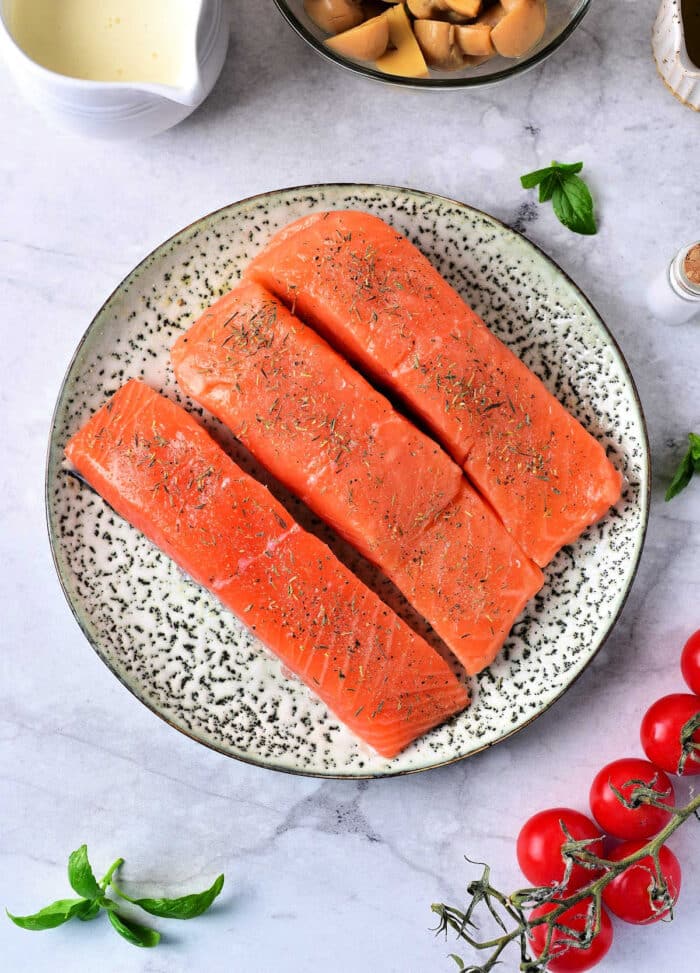
Salmon Cook Temp and Time
With its delicate flavor, rich texture, and numerous health benefits, has become a staple in cuisines around the world. Whether grilled, baked, poached, smoked salmon or pan-seared, the key to an exceptional dish lies in achieving the perfect balance between doneness and maintaining it’s moisture.
While mastering the art of fish cooking might seem confusing, understanding the factors that influence cooking time and various techniques can get you the perfectly cooked pieces with a flavorful flesh and skin side as well. Of course some will only yield tender bites, like Crockpot Salmon, which is fabulous but won’t give you any crisp.
How long do you cook frozen coho salmon?
That is why there are so many ways to cook fresh and frozen salmon out there, because each person’s tastebuds are just so different. You can use the same temperature and timing below with just salt, pepper, and slices of lemon as you see here too. 12 minutes is always perfect for us. Seasonings can be tweaked every single time to your liking. 😉
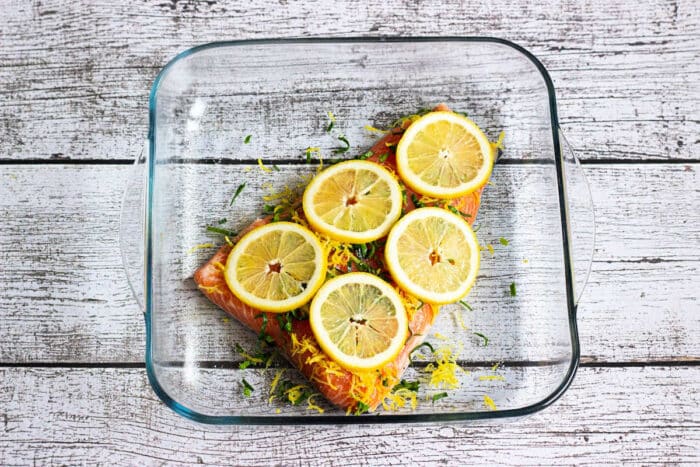
How Long Should You Cook Salmon
Several factors come into play when determining how long salmon takes to cook. These include the thickness of the fillet, the cooking method used, the initial temperature of the fish, and personal preferences regarding the level of doneness. A whole filet however typically takes 17 minutes.
- The thickness of the fillets is perhaps the most significant factor in determining cooking time. Thicker require longer cooking times, while thinner cuts cook more quickly. To ensure even cooking, it’s advisable to choose fillets that are relatively uniform in thickness.
- If baking again into another recipe such as Salmon Sushi Cups I’d start with less time initially.
- The cooking method chosen can significantly impact the cooking time and the resulting texture of the salmon. Common methods include baking, grilling, poaching, and pan-searing. Each method has its own optimal cooking time and unique flavor profile.
- whether it has a coating or not too will make a difference
- Almond Crusted Salmon will take a few more minutes than if it were plain
- Starting with salmon that’s at room temperature rather than straight from the refrigerator can influence cooking time. Cold requires more time to cook through, potentially leading to uneven cooking.
Personal preferences for the doneness varies widely. Some prefer that’s still slightly translucent in the center, while others prefer it fully cooked. Knowing the preferred level of doneness for each person is essential in getting YOUR desired outcome.

Cooking the perfect salmon fillet is important as you do not want to dry it out. I recommend the 5 ways below. The last is boiled fish which is possible but strips the meat of most it’s flavor so that is my least favorite.
How to Cook Coho Salmon in Oven
Baking Salmon at 400 is a foolproof method that yields tender and flavorful results. Preheat the oven to 375°F. Place the fillets on an aluminum foil or parchment-lined baking sheet, drizzle with olive oil, season with salt and pepper, and bake for about 12-15 minutes for a 1-inch thick fillet. For thicker fillets, add a few extra minutes. Baking time can also vary based on the doneness preference.
Air Fryer Directions
Salmon in the Air Fryer Dry Rub is a way to get a crisper outside than other methods, and quickly. You will need to cut it into smaller pieces though to fit nicely into the basket.
Grilled
Fresh or Frozen Salmon Grilled imparts a smoky flavor and crispy exterior. Preheat the grill to medium-high heat and lightly oil the grates. Grill fresh for about 4-6 minutes per side or 7 for hard, for a 1-inch thick fillet. Adjust the time based on the thickness and preferred doneness.
Poached
Poaching salmon in gently simmering liquid results in delicate and moist fish. In a wide skillet, bring a mixture of water, broth, or white wine to a simmer. Add the salmon fillets and poach for about 8-10 minutes, depending on thickness and desired doneness.
Pan-seared or Bacon Wrapped Salmon on the stove creates a beautifully caramelized crust. Heat a skillet over medium-high heat with oil or butter. Sear the fillets for 3-4 minutes on each side for a 1-inch thick fillet. Adjust the time to achieve the desired level of doneness.
While cooking times can vary based on thickness, cooking method, and personal preferences, you should understand the principles behind each one to create a delicious and moist fish dish. Whether you prefer a buttery and tender medium rare fillet or a fully cooked flaky texture, the key is to remain attentive, adapt to your circumstances, and experiment to find the timing that suits your taste buds.

How to Save Leftover Salmon
After enjoying initially, allow any leftovers to cool down to room temperature before refrigerating or freezing. Leaving it out for too long at room temperature can lead to bacterial growth. If you have a large piece left, consider dividing it into smaller portions. This allows you to thaw and use only what you need in the future without having to thaw the entire piece.
Wrap the leftover fish pieces tightly in plastic wrap, aluminum foil, or use airtight containers. Ensure there are no exposed areas to prevent moisture loss and freezer burn (if freezing). If using plastic wrap or foil, make sure it is sealed securely to prevent air from getting in.
Plan to consume within a day or two, store it in the refrigerator for up to 2 days. If you won’t be using the leftovers within a day or two, consider freezing for up to 2-3 months without a significant loss in quality. Place wrapped pieces in an airtight freezer safe bag or container.
How to reheat
If you wish to reheat, do so gently to avoid overcooking, which can make it dry. You can reheat it in the oven, microwave, Reheat Food in Air Fryer or on the stovetop, depending on your preference.
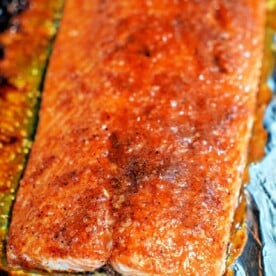
Coho Salmon Recipe
Equipment
- 1 baking sheet
- aluminum foil
- 1 small dish for dry rub
Ingredients
- 1.5 lbs salmon, fillet
- 1 tsp olive oil
- 1/4 c brown sugar
- 1/2 tbsp salt
- 1/2 tbsp granulated garlic
- 1/2 tsp chili powder
- 1/4 tsp paprika
- 2 tbsp sugar
Instructions
- Mix together all seasonings to make dry rub. Preheat oven to 400 degrees F. Line a baking sheet with non stick foil, or spray with non stick spray.
- Blot fillet with paper towels to remove moisture. Brush olive oil on top. Sprinkle dry rub on to the flesh and gently press on. Lift and allow excess to fall off. Set on baking sheet with flesh side facing up.
- Bake on middle rack for 12 minutes. Remove, let rest for 5 minutes, slice and serve.
Video
Nutrition
Nutrition information is automatically calculated, so should only be used as an approximation.

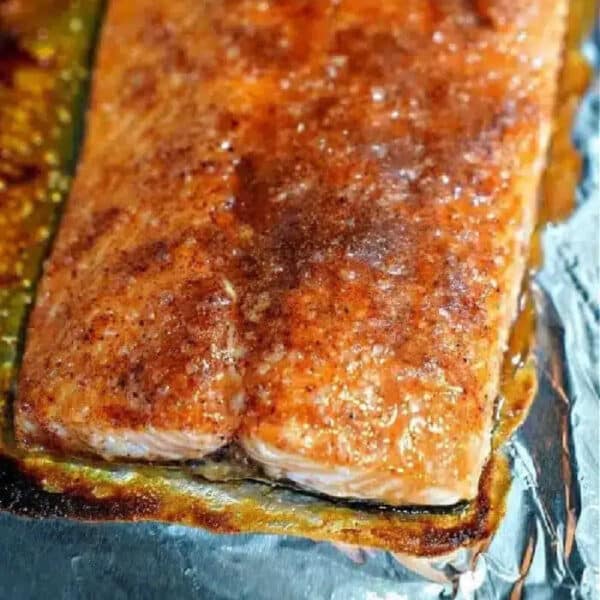
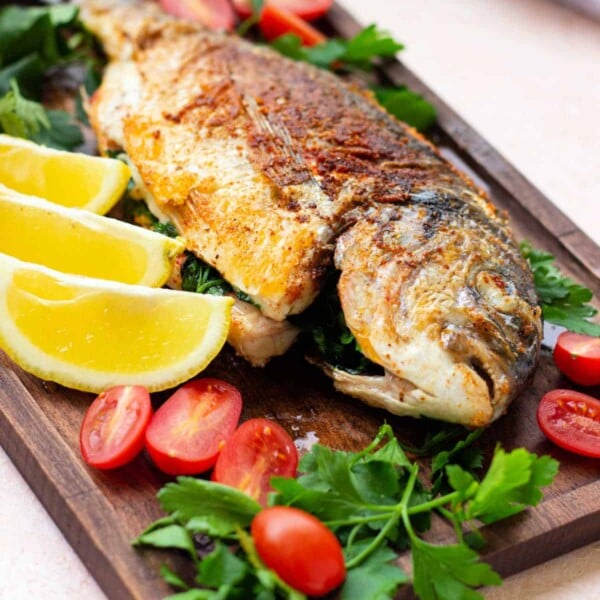
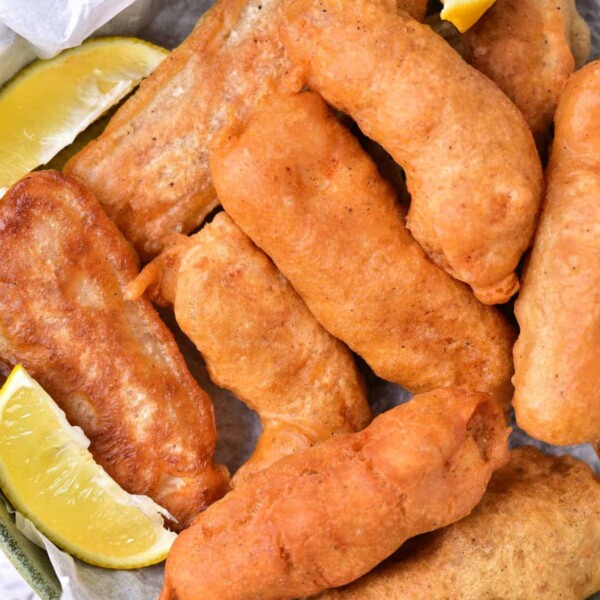
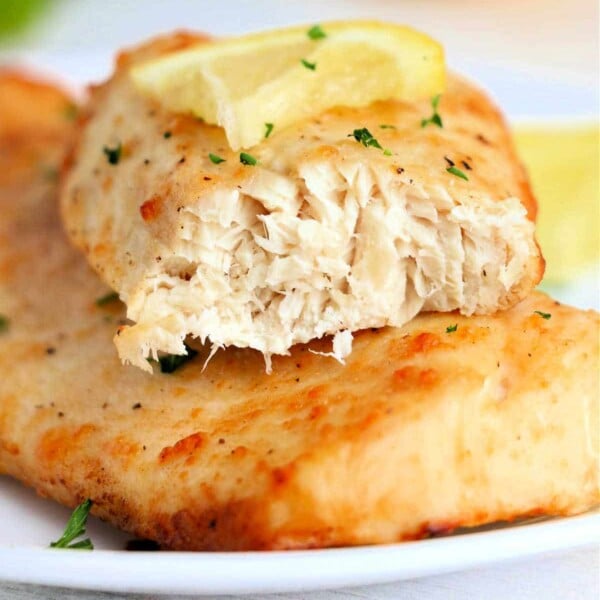







I made this salmon with dry rub last night and OMG it’s my new favorite salmon recipe! So good!
so glad
Great recipe! This salmon turned out so moist and tender – just delicious!
This dry rub enhanced our salmon and really took the flavor to the next level. Delish!
oh yay
I followed your how to cook coho salmon recipe last night, and it was delicious! The cooking tips you provided helped the salmon come out perfectly moist and flavorful. The simple seasoning allowed the natural taste of the fish to shine through. Thank you for such a clear and effective recipe; it made our dinner special!